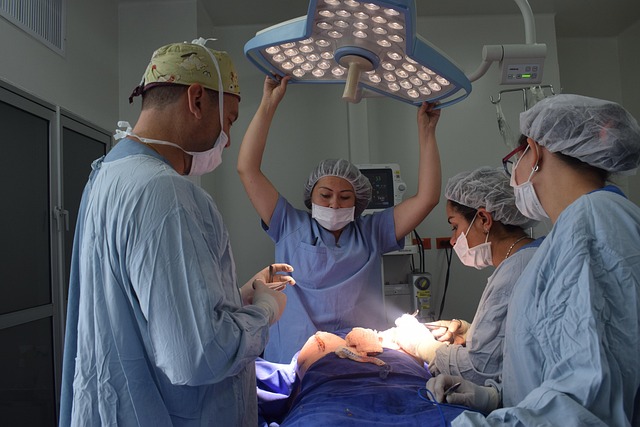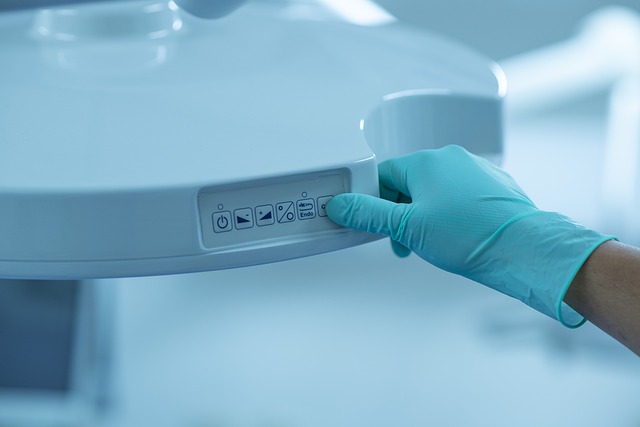In the competitive plastic surgery industry, targeted social media ads are essential for attracting ideal patients. By leveraging platforms like Instagram, Facebook, and LinkedIn, surgeons can micro-target demographics based on age, gender, location, interests, and behaviors. This precise approach ensures ads reach interested individuals, boosting conversion rates. Strategic marketing involves identifying ideal patients through demographic targeting, creating personalized ad campaigns for specific trends or needs, and utilizing Lookalike Audiences to expand the patient base. Effective tactics include before-and-after transformations, influencer collaborations, and high-quality visuals, while measuring success through KPIs like CTRs and conversion rates.
In today’s digital age, targeted social media ads are a game-changer for plastic surgery practices. This comprehensive guide delves into the art of leveraging platforms like Facebook and Instagram to attract ideal patients. From understanding demographic targeting to utilizing interest-based strategies and lookalike audiences, we explore creative ways to optimize ad campaigns. Learn how to measure success through key metrics, ensuring your plastic surgery marketing efforts resonate with the right audience and yield tangible results.
Understanding Targeted Social Media Ads for Plastic Surgery Practices

In the competitive landscape of plastic surgery, targeted social media ads have emerged as a powerful tool for practices to reach and engage their ideal patients. By leveraging platforms like Instagram, Facebook, and LinkedIn, plastic surgeons can micro-target specific demographics based on age, gender, location, interests, and behaviors—all crucial aspects in the plastic surgery marketing strategy. This level of targeting ensures that ads are shown to individuals who are most likely to be interested in procedures, increasing the chances of conversions.
Understanding your target audience is key to successful targeted social media ads for plastic surgery practices. Utilizing advanced analytics and insights provided by these platforms, surgeons can create highly personalized ad campaigns that resonate with potential patients. For example, a practice specializing in cosmetic procedures for millennials might focus on visually appealing content showcasing the latest trends, while a clinic offering facial rejuvenation services to professionals could emphasize the benefits of improved self-confidence at work. This strategic approach not only attracts but also converts viewers into actual patients.
Identifying Your Ideal Patient through Demographic Targeting

Identifying your ideal patient is a crucial step in effective plastic surgery marketing. Demographic targeting allows you to reach specific groups based on age, gender, location, and income level—key factors that influence a patient’s decision to pursue cosmetic procedures. By understanding these demographics, you can tailor your advertising efforts to resonate with prospective clients who are most likely to convert.
For instance, if your practice specializes in non-invasive facial treatments, focusing on demographic data like urban females aged 30–45 could be strategic. This targeted approach ensures that your marketing budget is allocated efficiently, maximizing the impact of your social media ads and ultimately attracting the right patients interested in plastic surgery.
Leveraging Interest-Based Targeting to Reach Desirable Customers

In the realm of plastic surgery marketing, reaching the right audience is paramount for success. One powerful strategy is leveraging interest-based targeting through social media ads. This approach allows practitioners to showcase their services to individuals who actively express interest in beauty enhancements or specific procedures. By studying users’ online behavior and preferences, algorithms can pinpoint potential clients who are not only aesthetically inclined but also within the demographic sweet spot for various plastic surgery types.
For instance, a cosmetic surgeon specializing in breast augmentation could target ads at women aged 25-40 who have recently searched for related terms or engaged with content about beauty standards and body image. This precise targeting ensures that marketing efforts are not just visible but also relevant, fostering a higher likelihood of conversions. Interest-based targeting is a game-changer in plastic surgery marketing, enabling practitioners to connect directly with their ideal customers.
Using Lookalike Audiences to Expand Your Reach and Find New Patients

In the realm of plastic surgery marketing, expanding your reach and attracting new patients is paramount. One powerful tool in your arsenal is utilizing Lookalike Audiences on social media platforms. This strategy enables businesses to identify and target individuals similar to their existing customers or followers. By analyzing demographic data, interests, and online behaviors, algorithms can create a new audience with high potential for conversion.
For instance, if you specialize in cosmetic procedures, you can leverage Lookalike Audiences to find people who may be interested in similar treatments but haven’t yet considered your practice. This allows for more targeted social media ads, ensuring your marketing efforts reach the right people at the right time. By tapping into this untapped market, plastic surgery practices can enhance their patient base and boost their online presence.
Optimizing Ad Campaigns: Creative Strategies for Engaging Potential Clients

In the realm of plastic surgery marketing, optimizing ad campaigns is an art that involves crafting compelling narratives to engage potential clients. A successful strategy leverages the power of targeted social media ads, allowing practitioners to reach specific demographics with tailored messages. By understanding the unique needs and preferences of their audience, surgeons can create visually appealing and informative content that captures attention and fosters trust.
Creative strategies include showcasing before-and-after transformations, offering exclusive discounts through social media platforms, and leveraging influencer partnerships to expand reach. Utilizing high-quality visuals and engaging video content can significantly enhance the impact of these ads. Additionally, incorporating interactive elements like polls or quizzes can encourage user engagement, providing valuable insights into client preferences while keeping the brand top of mind in a competitive market.
Measuring Success: Key Metrics for Evaluating Your Plastic Surgery Marketing Efforts

Measuring success in plastic surgery marketing is crucial for understanding what strategies resonate with your target audience and driving meaningful growth. Key metrics to evaluate include click-through rates (CTRs) from social media ads, which indicate the appeal of your content and ad copy. Higher CTRs suggest engaging material that encourages users to learn more about your services. Conversion rates are equally vital; tracking how many ad interactions result in bookings or consultations provides a clear picture of your campaign’s effectiveness.
Retargeting metrics offer valuable insights as well. Monitoring the engagement and conversion rates of retargeted ads helps assess the impact of past campaigns, enabling you to refine future marketing efforts. By analyzing these key performance indicators (KPIs), you can optimize your plastic surgery marketing strategies, ensuring that every ad dollar spent delivers tangible results.
